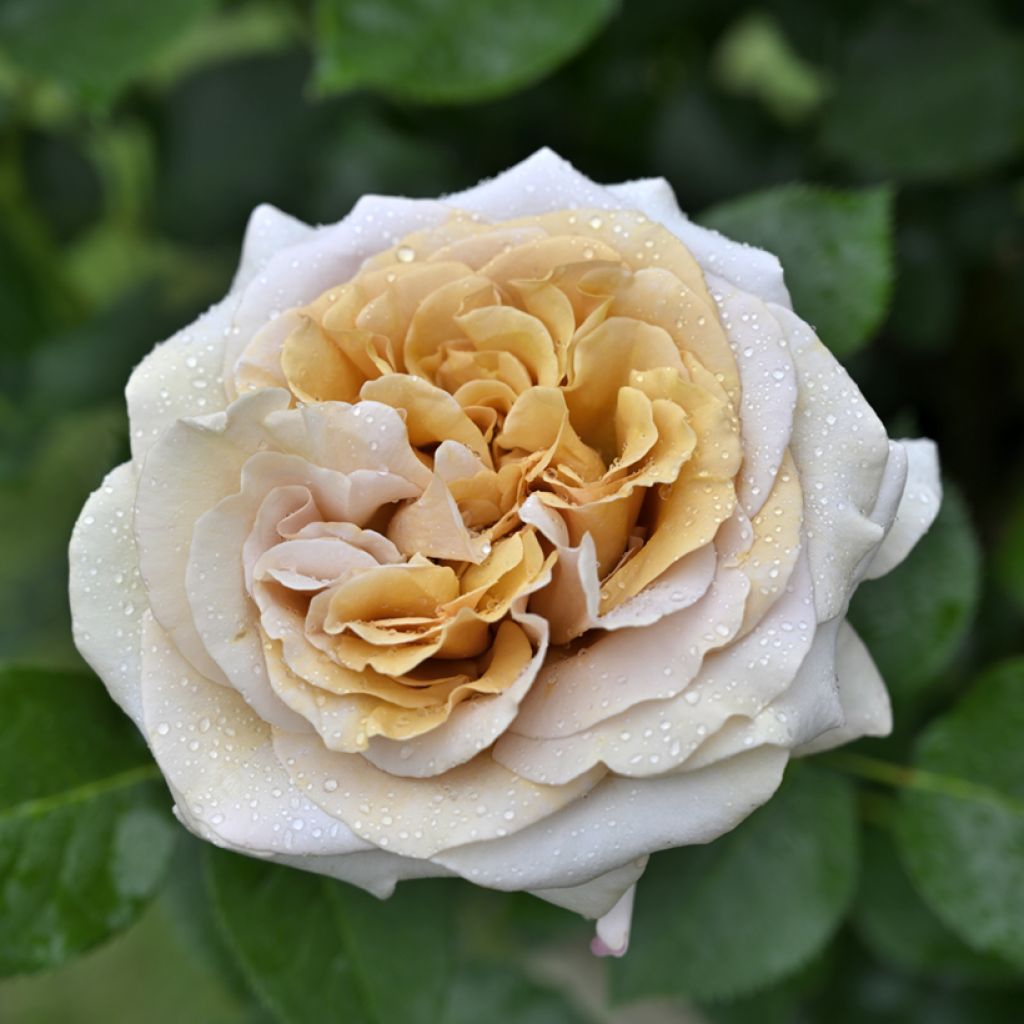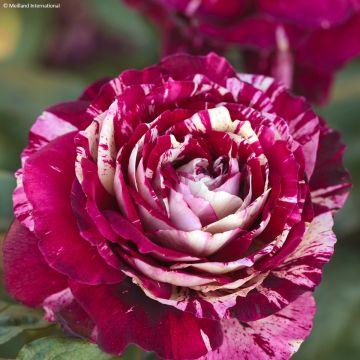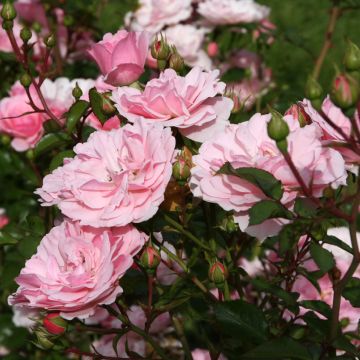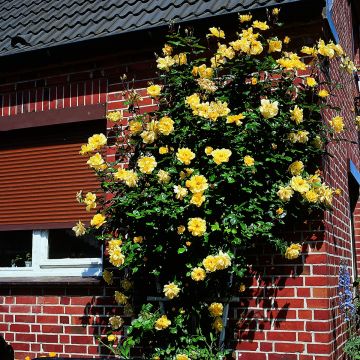

Rosa Rallye des Gazelles - Hybrid Tea Rose
Rosa Rallye des Gazelles - Hybrid Tea Rose
Rosa Rallye des Gazelles® Deltoffee
Hybrid Tea Rose
This item cannot be shipped to the selected country
Delivery charge from €5.90
Delivery charge from €5.90
Delivery to Corse prohibited
More information
Schedule delivery date,
and select date in basket
This plant carries a 24 months recovery warranty
More information
We guarantee the quality of our plants for a full growing cycle, and will replace at our expense any plant that fails to recover under normal climatic and planting conditions.
From €5.90 for pickup delivery and €6.90 for home delivery
Express home delivery from €8.90.
From €5.90 for pickup delivery and €6.90 for home delivery
Express home delivery from €8.90.
Delivery to Corse prohibited: UE law prohibits the import of this plant from mainland France to Corse as part of the fight against Xylella fastidiosa. Please accept our sincere apologies.
More information
Does this plant fit my garden?
Set up your Plantfit profile →
Description
Rosa Rallye des Gazelles® Deltoffee is a Delbard creation dating back to 2021, offering large flowers in an unusual colour blending shades of rosy caramel and golden sand. Praised for its beauty and intense fragrance, this perpetual rose bush also shows good disease resistance. Perfect for sunny flowerbeds, its large roses full of fragrant petals are sublime in a vase.
Belonging to the group of bush roses with large flowers, the Rosier Rallye des Gazelles® combines charm and robustness. Hybrid tea roses are known for their large usually solitary flowers on long stems, ideal for bouquets, and this cultivar is no exception. This variety was named on the occasion of the 30th edition of the Rallye Aicha des Gazelles in Morocco. With a height of about 75 cm and a width of 50 cm, this small bush has a compact, erect habit, perfect for small spaces. Its large 10 cm diameter flowers have over 60 petals in shades of caramel, golden sand, and salmon, revealing a crumpled heart reminiscent of old roses.
Its perpetual flowering period extends from May-June until the first frosts. Its powerful fragrance combines classic rose notes with hints of lime, pear, and sandalwood, adding an exotic dimension to this unique variety. The deciduous foliage is dense and dark green, forming a perfect setting for the soft, luminous flower shades. This rose is hardy to -20°C and resistant to diseases, making it an easy plant to grow, even for novice gardeners.
The Rallye des Gazelles rose is adorned with warm tones evocative of the Moroccan desert. It will fit perfectly in compositions with soft, sunny colours. In a flowerbed or border, it brings an exotic and refined touch to the garden will create fragrant bouquets. Pair it with plants in caramel, salmon, orange, sand, and pale yellow tones, such as 'California Sunset' bush sage, with its salmon-orange blooms, and 'Terracotta' yarrow, whose orange-yellow umbels harmonise with the warm tones of the rose, for an elegant and warm atmosphere. Add a touch of blue with the 'Kit Cat' Nepeta.
Report an error about the product description
Plant habit
Flowering
Foliage
Botanical data
Rosa
Rallye des Gazelles® Deltoffee
Rosaceae
Hybrid Tea Rose
Cultivar or hybrid
Other Large-flower tea Roses
Planting and care
Plant your Rallye des Gazelles rose in a sunny or lightly shaded location. Modern roses are tolerant, but do not like excess limestone. They will adapt to any garden as long as the soil is well worked, not too heavy, and rich. To plant your rose, work the soil well by crumbling it and adding a base fertiliser at the bottom of the planting hole, such as dried blood or dehydrated horn. Water generously after planting to remove air pockets. Water regularly for a few weeks to facilitate rooting. Avoid cutting too short during the first two years.
Pruning modern perpetual roses is essential for flowering. It is done in three stages:
1. Maintenance pruning: regularly shorten the flowered branches throughout the season. To promote the reblooming of perpetual roses, remove faded flowers along with their stem and 2 or 3 leaves.
2. Autumn preparatory pruning: this light pruning anticipates the real spring pruning.
In regions with cold winters, it is not recommended as it may weaken the bush.
3. Spring pruning: in February-March, when the buds have become shoots 2 to 3 cm long: prune the young strong branches to a quarter of their length.
Pruning always aims to clear the heart of the bush and remove dead wood, diseased branches, and weak shoots. Keep the most vigorous ones, usually 3 to 6 well-positioned branches to maintain a beautiful habit. Always prune at an angle ½ cm or 1 cm above a bud facing outwards.
Planting period
Intended location
Care
This item has not been reviewed yet - be the first to leave a review about it.
Roses by purpose
Haven't found what you were looking for?
Hardiness is the lowest winter temperature a plant can endure without suffering serious damage or even dying. However, hardiness is affected by location (a sheltered area, such as a patio), protection (winter cover) and soil type (hardiness is improved by well-drained soil).

Photo Sharing Terms & Conditions
In order to encourage gardeners to interact and share their experiences, Promesse de fleurs offers various media enabling content to be uploaded onto its Site - in particular via the ‘Photo sharing’ module.
The User agrees to refrain from:
- Posting any content that is illegal, prejudicial, insulting, racist, inciteful to hatred, revisionist, contrary to public decency, that infringes on privacy or on the privacy rights of third parties, in particular the publicity rights of persons and goods, intellectual property rights, or the right to privacy.
- Submitting content on behalf of a third party;
- Impersonate the identity of a third party and/or publish any personal information about a third party;
In general, the User undertakes to refrain from any unethical behaviour.
All Content (in particular text, comments, files, images, photos, videos, creative works, etc.), which may be subject to property or intellectual property rights, image or other private rights, shall remain the property of the User, subject to the limited rights granted by the terms of the licence granted by Promesse de fleurs as stated below. Users are at liberty to publish or not to publish such Content on the Site, notably via the ‘Photo Sharing’ facility, and accept that this Content shall be made public and freely accessible, notably on the Internet.
Users further acknowledge, undertake to have ,and guarantee that they hold all necessary rights and permissions to publish such material on the Site, in particular with regard to the legislation in force pertaining to any privacy, property, intellectual property, image, or contractual rights, or rights of any other nature. By publishing such Content on the Site, Users acknowledge accepting full liability as publishers of the Content within the meaning of the law, and grant Promesse de fleurs, free of charge, an inclusive, worldwide licence for the said Content for the entire duration of its publication, including all reproduction, representation, up/downloading, displaying, performing, transmission, and storage rights.
Users also grant permission for their name to be linked to the Content and accept that this link may not always be made available.
By engaging in posting material, Users consent to their Content becoming automatically accessible on the Internet, in particular on other sites and/or blogs and/or web pages of the Promesse de fleurs site, including in particular social pages and the Promesse de fleurs catalogue.
Users may secure the removal of entrusted content free of charge by issuing a simple request via our contact form.
The flowering period indicated on our website applies to countries and regions located in USDA zone 8 (France, the United Kingdom, Ireland, the Netherlands, etc.)
It will vary according to where you live:
- In zones 9 to 10 (Italy, Spain, Greece, etc.), flowering will occur about 2 to 4 weeks earlier.
- In zones 6 to 7 (Germany, Poland, Slovenia, and lower mountainous regions), flowering will be delayed by 2 to 3 weeks.
- In zone 5 (Central Europe, Scandinavia), blooming will be delayed by 3 to 5 weeks.
In temperate climates, pruning of spring-flowering shrubs (forsythia, spireas, etc.) should be done just after flowering.
Pruning of summer-flowering shrubs (Indian Lilac, Perovskia, etc.) can be done in winter or spring.
In cold regions as well as with frost-sensitive plants, avoid pruning too early when severe frosts may still occur.
The planting period indicated on our website applies to countries and regions located in USDA zone 8 (France, United Kingdom, Ireland, Netherlands).
It will vary according to where you live:
- In Mediterranean zones (Marseille, Madrid, Milan, etc.), autumn and winter are the best planting periods.
- In continental zones (Strasbourg, Munich, Vienna, etc.), delay planting by 2 to 3 weeks in spring and bring it forward by 2 to 4 weeks in autumn.
- In mountainous regions (the Alps, Pyrenees, Carpathians, etc.), it is best to plant in late spring (May-June) or late summer (August-September).
The harvesting period indicated on our website applies to countries and regions in USDA zone 8 (France, England, Ireland, the Netherlands).
In colder areas (Scandinavia, Poland, Austria...) fruit and vegetable harvests are likely to be delayed by 3-4 weeks.
In warmer areas (Italy, Spain, Greece, etc.), harvesting will probably take place earlier, depending on weather conditions.
The sowing periods indicated on our website apply to countries and regions within USDA Zone 8 (France, UK, Ireland, Netherlands).
In colder areas (Scandinavia, Poland, Austria...), delay any outdoor sowing by 3-4 weeks, or sow under glass.
In warmer climes (Italy, Spain, Greece, etc.), bring outdoor sowing forward by a few weeks.






















































